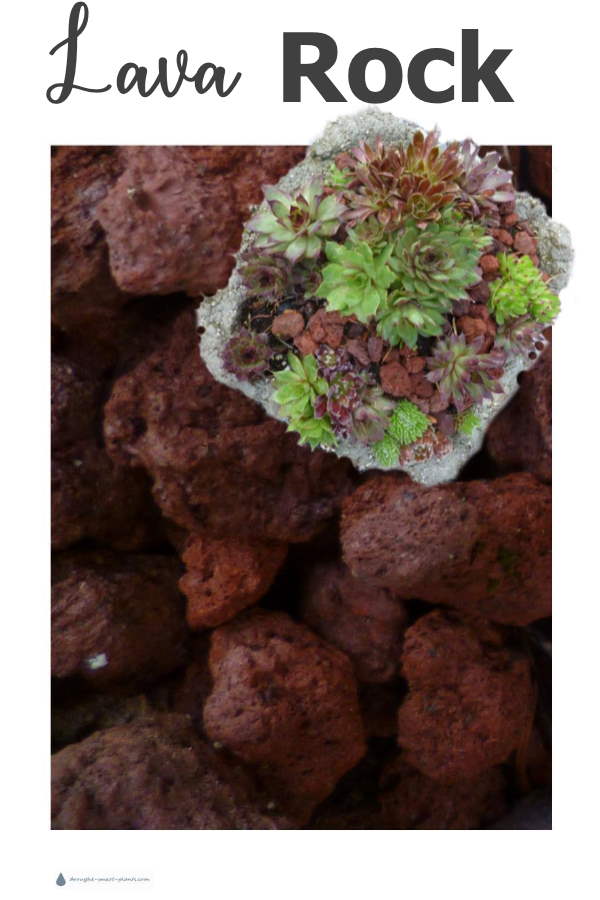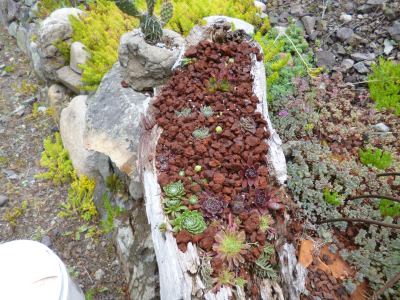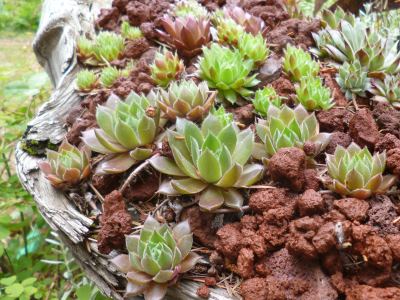The absolute best mulch for xeric gardens
Lava rock is formed by the action of volcanoes, bringing up molten rock from deep under the crust of the earth.

The volcanic rock cools on contact with the air, complete with air pockets. In some cases it is so light that it floats on water.
The porous air filled rock also has a high water holding capacity as the moisture will stick to the extra high surface area. In almost a complete contradiction, lava rock has very good drainage.
Lava rock is my all time favorite mulch for all the hardy succulent plants such as Sedum, Sempervivum and Jovibarba, as well as on the top of the soil in terracotta pots which I prefer for the tender succulent plants.
Using lava rock screened (to remove large pieces and also dust) as mulch will not only keep weeds down due to the shading of the ground (most weed seeds need light to germinate) it also retains moisture in the shaded soil beneath it.
Larger pieces are used in barbeques and the biggest pieces as focal points or drilled out to use as planters like the gift from the volcano.

A little realized benefit to mulching with lava rock is that due to the formation of the rock deep under ground, minerals and micro nutrients are present that slowly leach out in minute quantities to feed the plants.
Tests show that micro nutrients even in these tiny amounts are enough to give many drought tolerant plants all the food they need.
Interestingly, lava rock can be used to filter water.
Running water either in a waterfall in your pond, where the water is continually filtered to remove algae, or to remove debris from rain water captured from a roof.
You can see more about making a koi pond filter here.
It’s been advocated to use water filtered with lava rock to water tomatoes, as it’s thought to prevent certain types of bacterial blight. Interesting thought…
Using lava rock or other mineral mulch in wildfire prone areas is recommended rather than flammable mulch such as bark or wood chips to prevent the spread of fire.
Crushed and added to soil mixes, it provides the perfect drainage many succulent plants demand.
Lava rock is found in many different colours, to complement the plants and hardscaping in your xeric garden.

The colour most commonly distributed through garden centers is a brick red which suits many garden schemes, similar to crushed brick or shale mulch or the red bricks used as paving.
It is also available in pink or dark charcoal colours, which are less used because it’s harder to fit the colour of the pink into landscapes, and the heat retaining properties of the darker hue.
The difference in colour is because each volcano brings up rock with varying characteristics depending on the chemical make up of the magma.
Using lava rock in layers a few centimeters thick is all that’s required for mulch as it never fades and is almost permanent.
The cost of bagged lava rock although high initially is actually economical over the long run.
Additional mulch is needed to top up the base layer up to three to six rocks deep, and then there is virtually zero maintenance.

